For this Art Talk post we are going to stay in Washington, DC and move to the national mall and the iconic Smithsonian Castle and Gothic Revival architecture.
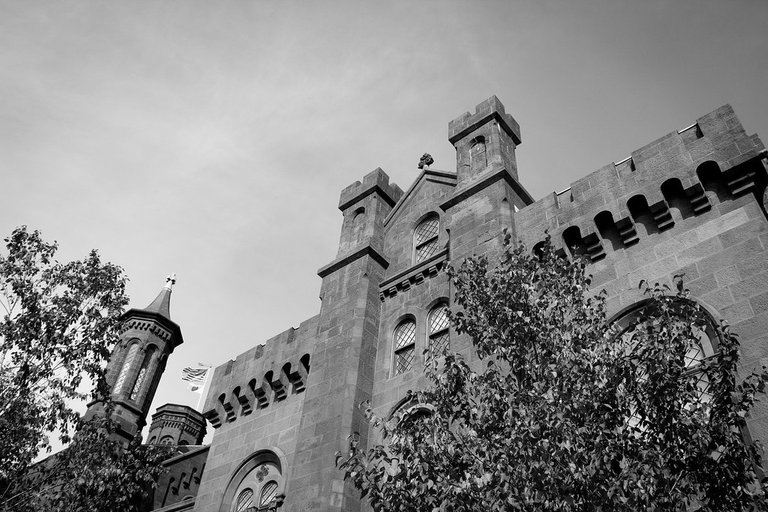
In my last post Art Talk: Architecture of the US Capitol I talked about how the Capitol was started in 1793 and is great example of neoclassical architecture. I also pointed out that there are many other neoclassical buildings in DC such as The White House (1792), the US Supreme Court (1835), the Lincoln Memorial (1922), the United States Archives (1934), the National Gallery of Art (1937), and the Jefferson Memorial (1943).
Lest you think that all the buildings in DC are Neoclassical, I want to show you the Smithsonian Castle and it's Gothic Revival architecture.
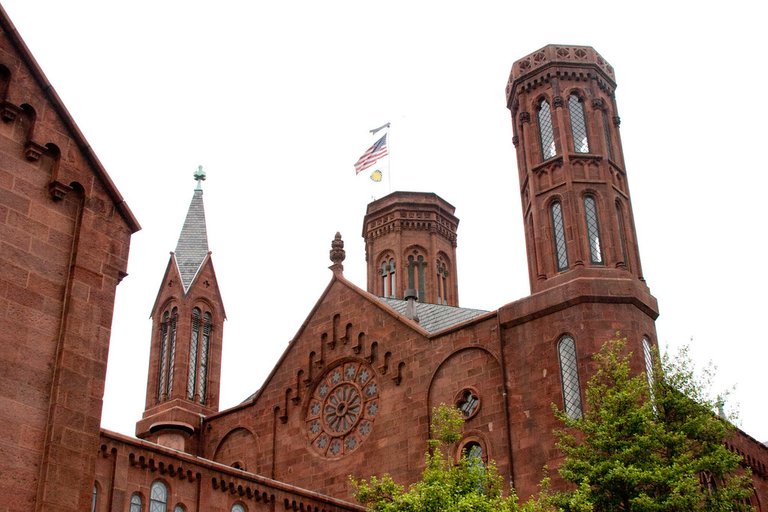
From the Smithsonian Institution Archives we learn:
The Smithsonian Institution Building, popularly known as the "Castle" was designed by architect James Renwick, Jr. The building is constructed of red sandstone from Seneca Creek, Maryland, in the Norman style (a 12th- century combination of late Romanesque and early Gothic motifs). When it was completed in 1855, it sat on an isolated piece of land cut off from downtown Washington, DC, by a canal. In the ensuing decades, the Castle became the anchor of the National Mall, as additional museums and government buildings were constructed around it. 1
Map of The National Mall
To help put things into perspective here is a map of the National Mall.
#1, on the right, is the US Capitol and #28, towards the middle, is the Smithsonian Castle and #35, at the far left, is the Lincoln Memorial.

In the book Disturbing Times and the Chapter: Confederate Gothic Joshua Davies informs us: 2
One of the first examples of domestic Gothic architecture in America; the Smithsonian Institution building (1855), the first large-scale public building built in the Gothic style.
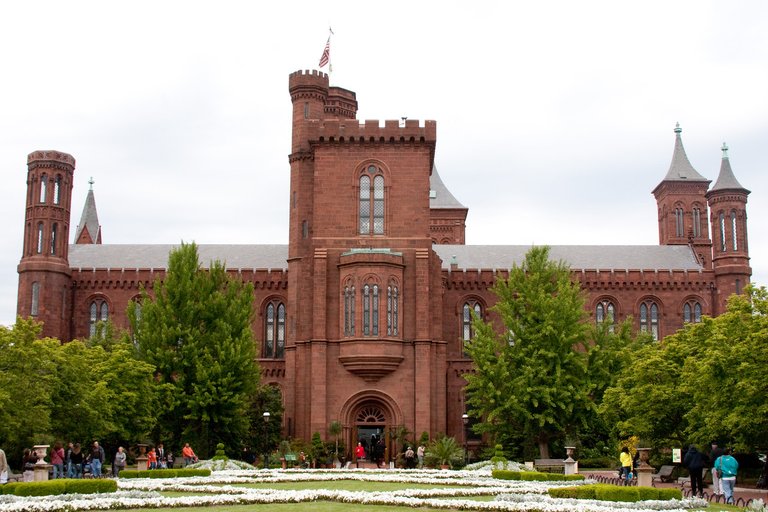
Understanding Gothic Revival Architecture
To help us understand Gothic Revival Architecture we need to understand a few other architectural terms.
Joshua Davies continues:
My use of the term “Gothic” is deliberately broad. Among the buildings I discuss in this chapter, for instance, the Smithsonian was described as “Norman” but might be more accurately termed “Romanesque.” The question of classification and terminology are very complex. I have used “Gothic” as a means of emphasizing the shared medieval origins of the architectural forms, in keeping with much of the scholarly and popular literature on these buildings.
The author is using Gothic as an umbrella term. I would like to go over some of the other terms to help us understand Gothic Revival Architecture.
Gothic Architecture 3
When: Mid 12th to 16th Centuries
What: Flying buttresses, pointed arch, stained glass, etc..
Why: Engineering finally permitted tall buildings
Where: Europe
Norman Architecture 4
When: 11th and 12th Centuries
What: Round arches, basilica plan, windows, towers and spires
Why: shortly before the Norman Conquest of England (1066) Normandy become settled and sophisticated enough to produce an architecture style
Where: Normandy, France and England
Romanesque Architecture 5
When: Mid 11th-Mid 12th century
What: A fusion of Roman, Carolingian and Ottonian, Byzantine, and local Germanic traditions that had semicircular arches, vaults, naves, massive walls with few windows and towers
Why: larger churches were needed to accommodate the numerous monks and priests, as well as the pilgrims who came to view saints’ relics.
Where: Europe
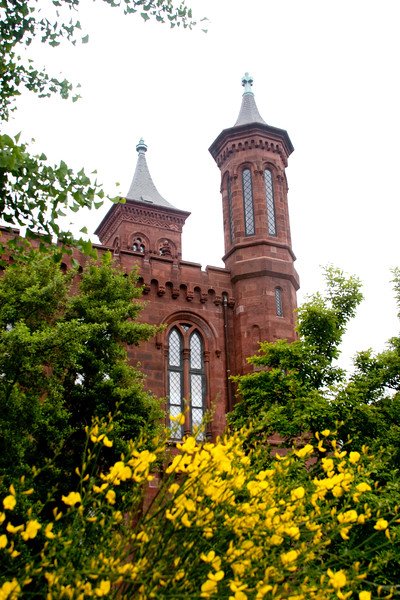 |  | 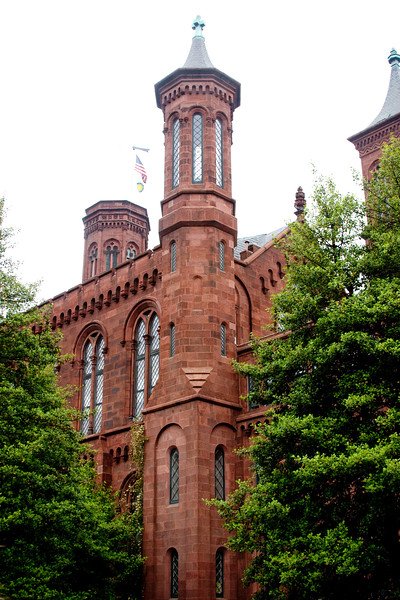 |
|---|
Gothic Revival Architecture 6 and 7
When: 19th and into the 20th century
England- Private as early as 1765, Public started 1820s
United States- Private started in 1840s, Public started in the 1850s
What: Arched windows, steeply pitched roofs, ornamental tracery, rich color, vertical emphasis
Why: A Romantic revolution was happening, a religious and moral impetus and the writings of Ruskin who romanticized the medieval times.
Where: England and United States
Gothic Revival Architecture and the Smithsonian Castle
Let's take a look at the Smithsonian Castle and it's Gothic Revival architecture characteristics.
Time period. It was built in 1855, right in the middle of the 19th century which is when Gothic Revival Architecture was popular in the United States.
It was built amidst many neoclassical buildings in DC. Neoclassical architecture was happening in the 18th and 19th centuries.
Buildings in DC near the Smithsonian Castle
 | 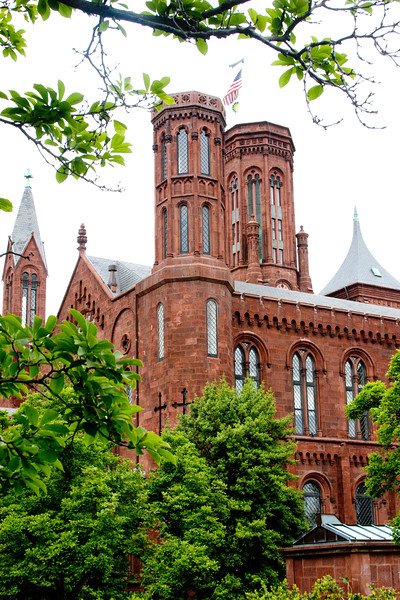 | 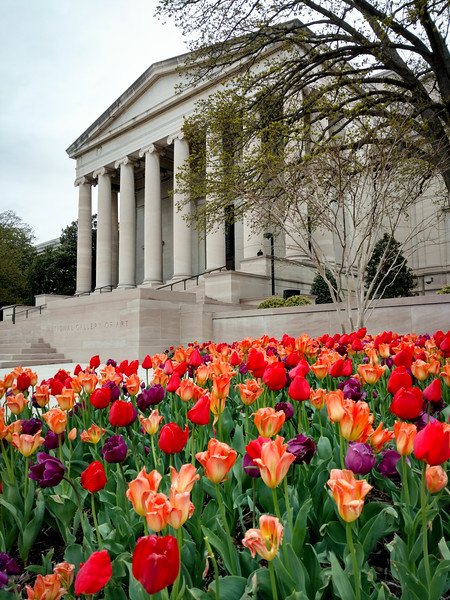 |
|---|---|---|
 |  |  |
Rich Color In looking at the pictures above you can see that the Castle with it's rich red brick is quite a contrast to the light colored Neoclassical buildings surrounding it.
Revival Like Neoclassical which was reviving the Greek and Roman ideals. Gothic Revival is bringing back ideas like conservativism and monarchy. 8 Which I find ironic as the United States fought to leave the monarchy of Britain only 79 years earlier.
Arched Windows

Ornamental Tracery
What is tracery you ask?
Tracery is an architectural device by which windows (or screens, panels, and vaults) are divided into sections of various proportions by stone bars or ribs of moulding. 9
Here are some examples of ornamental tracery on the Smithsonian Castle

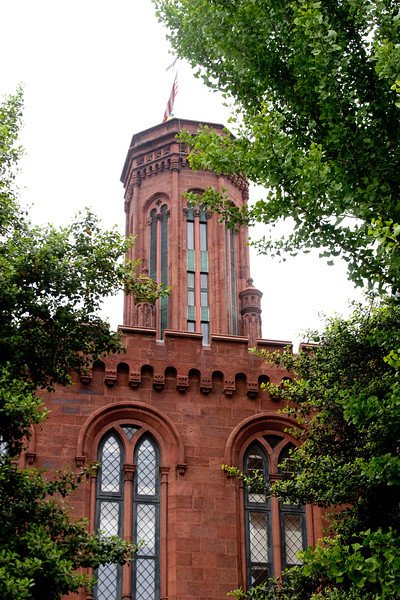
Vertical Emphasis
In this picture you can see how tall the tower is in comparison to the people walking in front of the castle. North Tower is 145 feet high.

Hope you enjoyed this look at the Gothic Revival Architecture that was happening in America and DC in the mid 1850s that inspired this beautiful medieval castle.
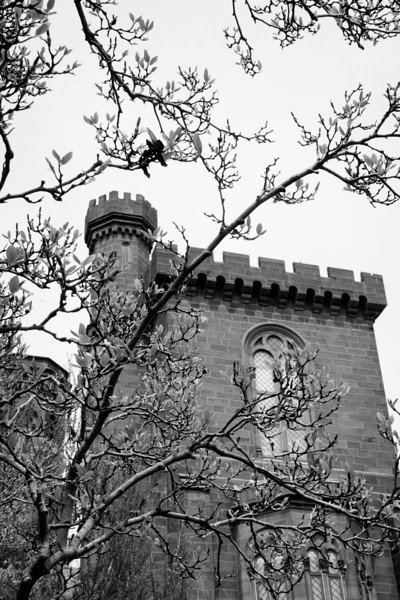
I also want to share a few pictures of the gardens around the castle.
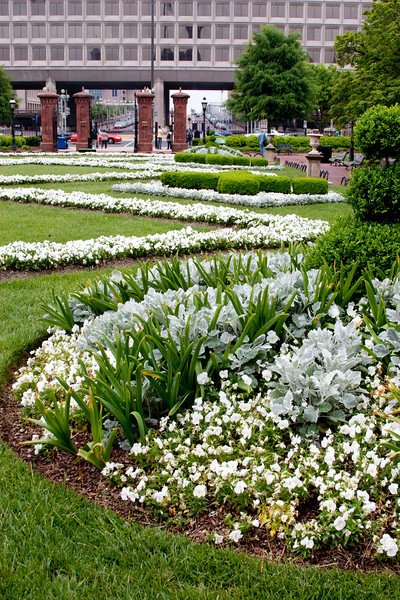 | 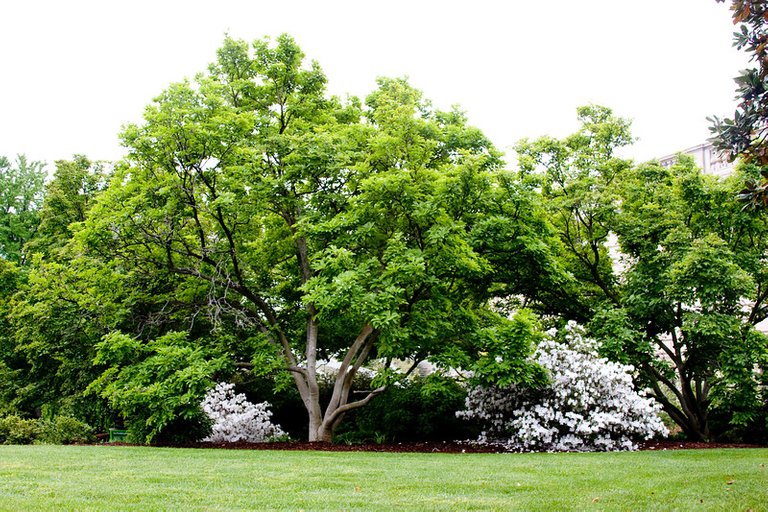 |  |
|---|
Sources:
1- Smithsonian Archives- Smithsonian Institution Building Castle
2- JSTOR- Disturbing Times
3- Britannica- Gothic Architecture
4- Britannica- Norman Style
5- Britannica- Romanesque Architecture
6- Britannica- Gothic Revival
7- Walls with Stories- Gothic Revival Architecture
8- Lumen Learning- Gothic Revival
9- Wikepedia- Tracery
10- Wikepdia- Smithsonian Institution Building

Art Talk Series Highlights
2021- Architecture as Art
Art Talk: Architecture of San Xavier del Bac Mission
Art Talk: Architecture of the US Capitol
Past Art Talk posts
Art Talk: 2020 Posts
Art Talk: 2019 Posts
Art Talk: 2018 Posts
Hello Sara, wonderful post! Love how you defined each period style to highlight their differences and to emphasize the Gothic Revival Architecture. The red sandstone on the Smithsonian Castle blended so well with the ornaments and form. I agree this made it stand out and create its own unique identity.
Hi Arni, Thanks for the comment and taking the time to read the post! :) It really is a great building.
The national mall in DC contains an interesting mix of buildings with various architectural styles. For a good change, the Smithsonian Castle with its Gothic Revival architecture simply breaks the monotony of the Neoclassical designs that's common in that area. Beautiful post @sjarvie5!
Thanks so much!
Hiya, @ybanezkim26 here, just swinging by to let you know that this post made it into our Honorable Mentions in Daily Travel Digest #1192.
Your post has been manually curated by the @pinmapple team. If you like what we're doing, please drop by to check out all the rest of today's great posts and consider supporting other authors like yourself and us so we can keep the project going!
Become part of our travel community:
Thanks @ybanezkim26
You're welcome! 🤗
Nice post! I"m from the DC suburbs originally and lived downtown in the 90s as a bike messenger. I've been gone a long time but for me one of the best things to do was to go to the Smithsonians for all the great free events :)
Thanks Chris. I lived in Virginia and worked at GWU for years and loved going to DC too!
Nice! Both my parents are from VA. My Dad's family is from Fairfax.
Que bello el castillo, solo me imagino todo el trabajo de los arquitectos y constructores!!! cada detalle cuenta! excelentes fotos!
Thanks so much.
So amazing!! :) :)
Hi. It's been awhile. Thanks!
Hello, indeed it has! :) You are welcome!
You are a good observant! The details are interesting to learn.
Keep flourishing!
Thanks. Glad you enjoyed learning about the architecture of this beautiful building.
It is super interesting, the specific styles an elements are mesmerizing. Wonderful post!
Hope you have a lovely week:)
Thanks @Sahiba-rana
The castle seems to have been built in a Norman style, somewhere between Romanesque and Gothic, and is a very impressive and admirable structure.
Yes it is a beautiful building.
Very good
Thanks
Wonderful story worth reblogging, @sjarvie5. Smithsonian Castle is an architectural masterpiece.
Thanks @zorank
Congratulations, your post has been added to Pinmapple! 🎉🥳🍍
Did you know you have your own profile map?
And every post has their own map too!
Want to have your post on the map too?
Beautiful post! Even if it is a revival of the Gothic, it still has its charm.